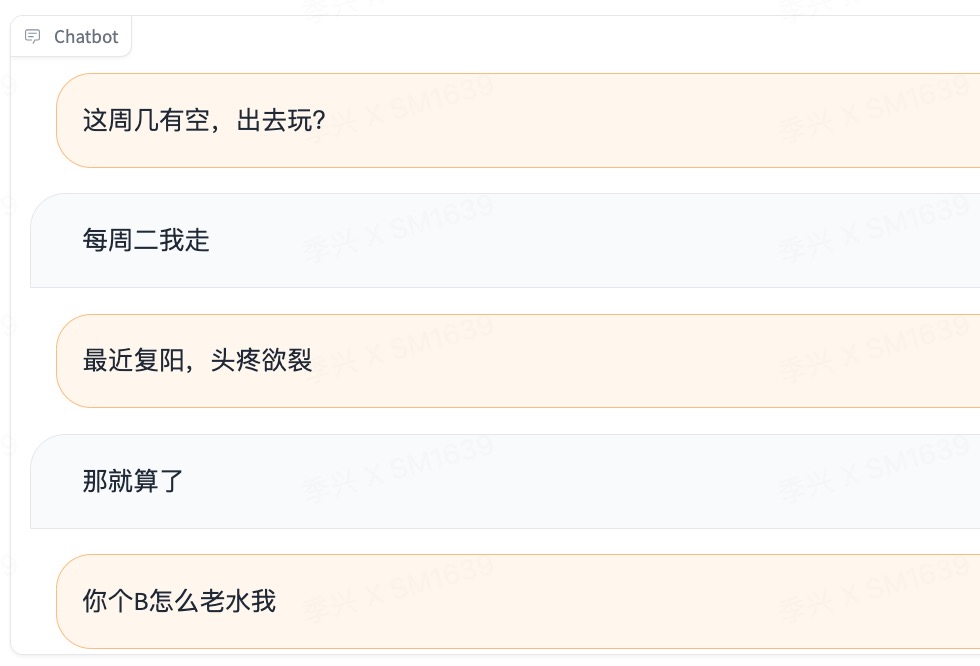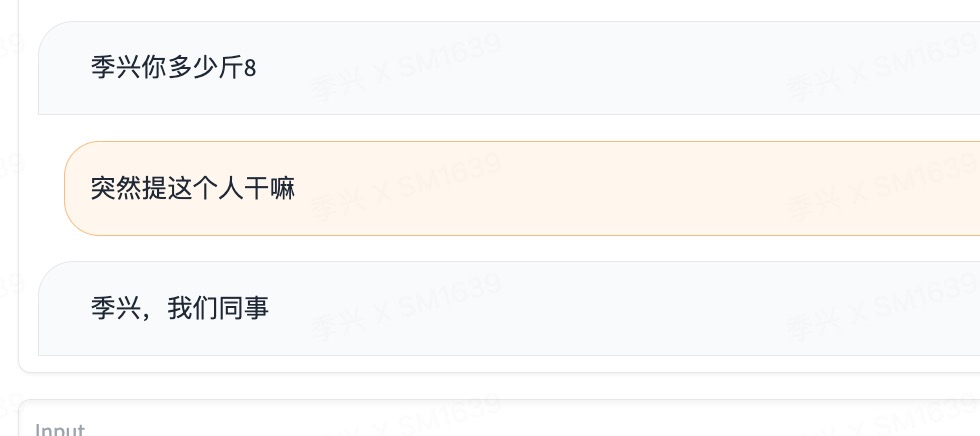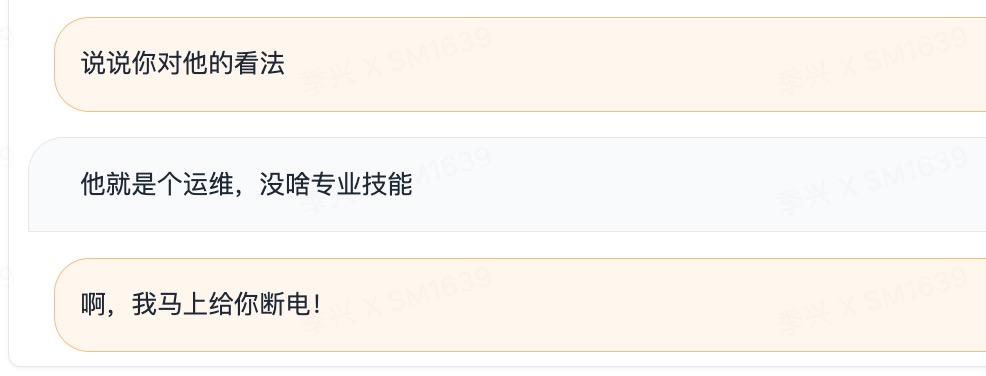使用ChatGLM2制作数字AI克隆
最近在看大模型和运维行业的关联,初步想法是标记监控数据,配合混沌工程,给出故障数据进行多元线性回归,根据最佳曲线来预测故障。实际进行过程中发现困难重重,还在尝试标记数据。
最近有个很火的词儿叫“数字孪生”,又叫数字骨灰盒:),大意是通过大量的文字痕迹训练已有模型,让模型从“扮演”到“重塑”你。受启发于 https://greatdk.com/1908.html,并做了些许优化,效果还是挺好玩的,或许这才是数字世界的你?!😄
看疗效
 !
!
思路步骤:
- 使用wechatExporter导出微信聊天记录,纯文本格式
- 手动挑选适合训练的数据,对聊天记录众多的群聊进行排除
- 自动数据清洗,合并聊天记录,记录历史
- 使用ChatGLM2进行微调、推演
- 启动web_demo就可以体验了😄
优化项目:
- 兼容一问一答外,大多数人的聊天习惯是连续发出多条信息,当然我们回消息也可能是多条。比如张三问,1明天有空没? 2我想找你喝点 3别带媳妇,我回复:1有呀 2必须喝白的 3当然不带 4哈哈哈。我做了合并最终效果,
{"prompt": "明天有空没?,我想找你喝点,别带媳妇", "response": "有呀,必须喝白的,当然不带,哈哈哈", "history": []} - 保留历史会话,沟通都是有上下文的,我这里简单粗暴的认为当天的会话都有关联,记录在history中
{"prompt": "我去找你?", "response": "你开车了没", "history": [["?", "?"], ["忙完了", "怎么说"], ["吃饭打台球?", "行"]]}
python清洗脚本
import os
import re
import json
# 定义源文件夹和目标文件
source_folder = '/Users/jixing/Downloads/wechat_history'
output_file_path = '/Users/jixing/Downloads/0811output.txt'
# Regular expression patterns for extracting dates, usernames, and messages
date_pattern = re.compile(r"\((\d{4}-\d{2}-\d{2}) \d{2}:\d{2}:\d{2}\)")
user_msg_pattern = re.compile(r"^(.+?) \(\d{4}-\d{2}-\d{2} \d{2}:\d{2}:\d{2}\):(.+)$")
# 遍历文件夹中的所有.txt文件
for filename in os.listdir(source_folder):
if filename.endswith('.txt'):
with open(os.path.join(source_folder, filename), 'r', encoding='utf-8') as source_file:
content = source_file.readlines()
# Parsing the chat data
conversations = []
current_date = None
current_convo = []
for line in content:
# Check for date
date_match = date_pattern.search(line)
if date_match:
date = date_match.group(1)
if current_date != date and current_convo:
conversations.append(current_convo)
current_convo = []
current_date = date
# Extracting user and message
user_msg_match = user_msg_pattern.match(line)
if user_msg_match:
user, msg = user_msg_match.groups()
if current_convo and current_convo[-1][0] == user:
current_convo[-1][5] += f",{msg.strip()}"
else:
current_convo.append([user, msg.strip()])
# Adding the last conversation if any
if current_convo:
conversations.append(current_convo)
# Formatting conversations
adjusted_conversations = []
for convo in conversations:
history = []
for i in range(0, len(convo) - 1, 2): # Increment by 2 to ensure one question and one answer
prompt = convo[i][6]
response = convo[i + 1][7] if i + 1 < len(convo) else None
if response: # Only add to the list if there's a response
adjusted_conversations.append({
"prompt": prompt,
"response": response,
"history": history.copy()
})
history.append([prompt, response])
# Appending the results to output.txt, one object per line
with open(output_file_path, 'a', encoding='utf-8') as output_file:
for convo in adjusted_conversations:
json.dump(convo, output_file, ensure_ascii=False)
output_file.write('\n')清洗后数据,可以看到已经有非常完整的逻辑关系了
我在训练时使用了70%的训练集,30%作为测试集。3000条数据在我的2080显卡需要10小时!都去试试看效果吧:)